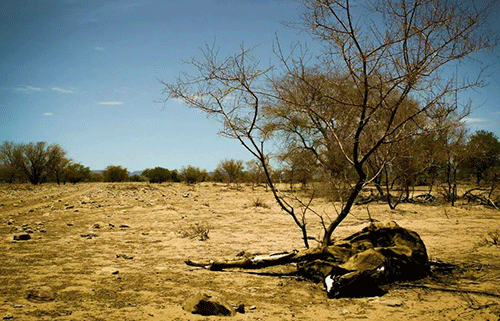The Kunene region is still caught in the grips of a terrible drought, with five out of seven constituencies experiencing a severe dry period that has lasted for at least seven years with no apparent end in sight.
According to the region’s 2021/22 progress report, the devastating negative impacts of climate change continue to weigh heavily on the vulnerable communities and farmers, leaving them with no choice but to constantly migrate in search of adequate grazing.
The Kunene region spans over an area of over 115 000 square kilometres with a population of around 97 800 people.
The region is also home to a number of marginalised communities, such as Ovahimba, Zemba, Ovatue and San.
Despite being endowed with a diversity of rich, untapped natural resources, attractive tourism sites and agriculture potential, the region is still considered one of the poorest in the country.
According to the 2021 Multidimensional Poverty Index released by the Namibia Statistics Agency, which provided an indication of the geographical areas hardest hit by poverty, Kunene stood out with the highest poverty rate at 64.1%.
Furthermore, the regional report recently presented in the National Council showed Kunene development projects face major challenges in terms of implementation.
The challenges mentioned include inadequate funding, the vastness and rough terrain of the region, late budget approval as well as slow procurement processes, among others.
“The procurement process is very slow, which can be attributed to the capacity level of the staff members and the turning down of offers by successful bidders,” reads the report.
Considering experiences observed during the execution of development plans, the regional leadership recommended an increase in budget allocation, specifically for the regional allocations and budget approvals to be made on time.
During a public gathering this month, through the National Planning Commission (NPC), national development advisor in sectoral planning at NPC Leena Sindano confirmed there are 62 ongoing projects in Kunene.
However, she admitted, most of these projects are moving at a slow pace, with an overall execution rate of 14.35%.
“Financial challenges are delaying these projects, as there is limited funding, particularly for larger projects. Another challenge is high virementation trends from development to operational budget. Thirdly, the high cost of projects,” she said.
NPC director general Obeth Kandjoze elaborated that green hydrogen is anticipated to revive regions such as Kunene that have been recognised for the potential to host Namibia’s green hydrogen hub.
Kunene has much-needed wind and solar potential near the Skeleton Coast, which are vital ingredients for the realisation of Namibia’s green hydrogen ambitions.
– mndjavera@nepc.com.na


